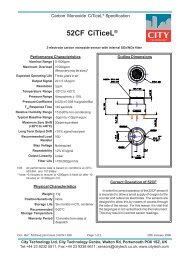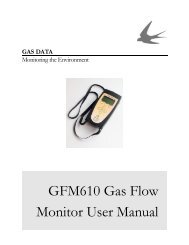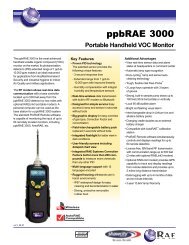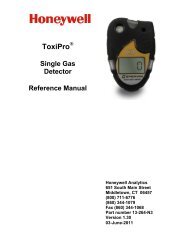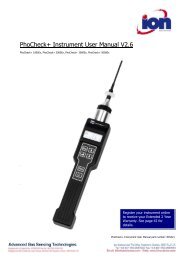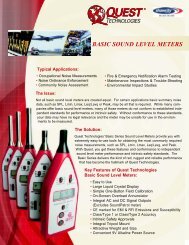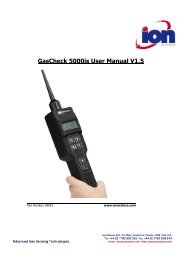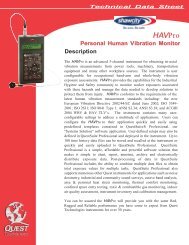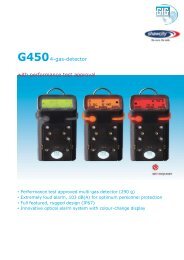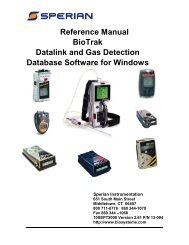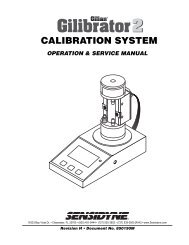MultiRAE - Shawcity Limited
MultiRAE - Shawcity Limited
MultiRAE - Shawcity Limited
Create successful ePaper yourself
Turn your PDF publications into a flip-book with our unique Google optimized e-Paper software.
calibration. This is the only way to positively differentiate between a faulty sensor and a<br />
real background signal. If you obtain a good calibration with “zero” air, and then recheck<br />
the zero with the same bottle of “zero” air, then you can have confidence that the<br />
instrument is working properly and the background signal you are seeing is caused by<br />
something in the environment.<br />
2.6.3 If, after a “zero” air calibration, you do not obtain a stable zero when applying the<br />
“zero” air to the instrument, then the sensor does not have a stable zero point and must be<br />
replaced.<br />
2.7 Pump Stall Adjustment.<br />
2.7.1 The Pump alarm can occur if the pump current exceeds the stall threshold value or<br />
if the pump current is 0. The pump current may increase over the threshold value as the<br />
pump ages or if the diaphragm is stiff due to cold temperatures. It may be necessary to<br />
adjust the pump stall threshold when switching from low to high pump speed or when<br />
adding additional lengths of tubing (Rev. D boards). Pump current may also increase if<br />
the inlet is blocked or the vapor trap filter is clogged. Before adjusting the pump stall<br />
threshold, make sure the flow path is not obstructed. Do not attempt to clean a clogged<br />
filter: it must be replaced.<br />
2.7.2 Turn on the unit in Diagnostic Mode (Section IV). The pump alarm is disabled in<br />
Diagnostic Mode. Press the [MODE] key repeatedly until you get to the “Pump =”<br />
screen. The top line is the measured pump current, and the bottom line is the threshold<br />
value at which the pump will stall in normal operating mode. When operating properly<br />
the stall threshold should be 6 - 10 counts higher than the operating current (typically 20 -<br />
30 counts).<br />
2.7.3 If the pump current is 0 then check for loose or broken wires. If the wires are<br />
intact, check the voltage between the red and black wires. It should be 3.5V. If the<br />
voltage is correct, then replace the pump assembly. If the voltage is not correct, then the<br />
unit will have to return to the factory for repair.<br />
2.7.4 If the pump is operating, block the inlet with your finger and observe the change in<br />
pump current:<br />
No change or only a few counts:<br />
1) Pump current < stall current means there is a leak in the flow path<br />
between your finger and the pump intake. Check the filter assembly, the<br />
inlet valve, the internal tubing, the pump inlet nipple, and the pump<br />
diaphragm. Clean or replace any parts that are dirty or leaking<br />
18



